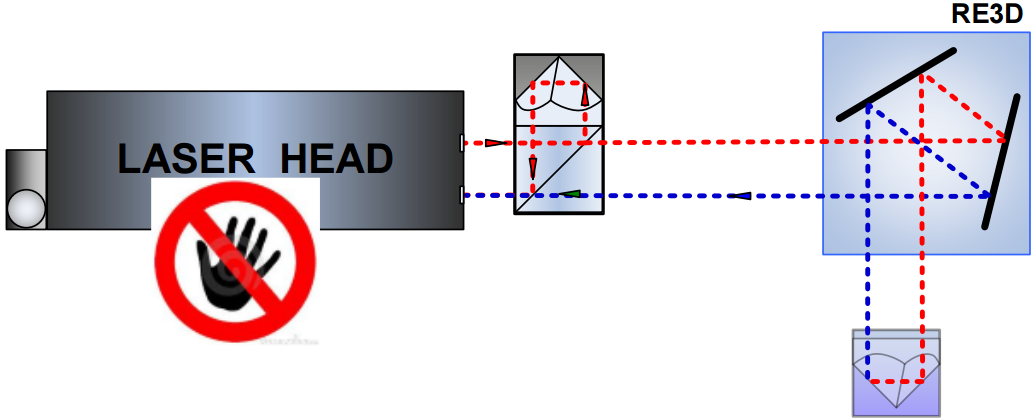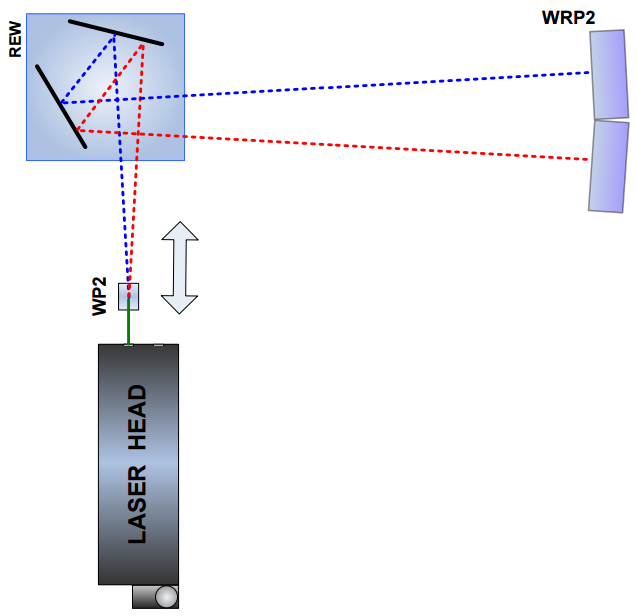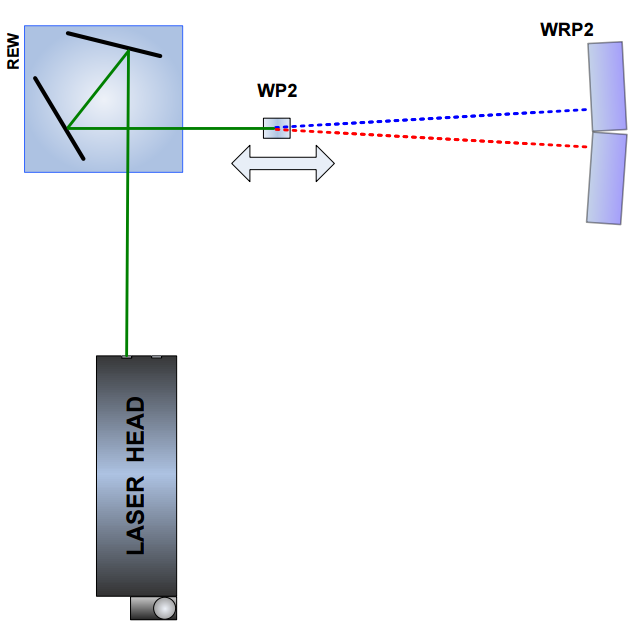Prostopadłość
Wybór elementów optycznych niezbędnych do pomiarów kwadratowości zależy od wybranej metody pomiaru: tj. 3D lub Wollaston. Jeśli stosowana jest metoda 3D, należy zastosować optykę liniową plus etalon kąta prostego. W tym przypadku niezbędnymi komponentami są:
- Głowica laserowa
- Zasilacz
- Interferometr liniowy IL1
- Retro-reflector liniowy RL1
- Etalon kąta prostego RE3D lub REW
W przypadku pomiaru optyką Wollastona niezbędnymi komponentami są:
- Zasilacz
- Pryzmat Wollastona WP2
- Reflector Wollastona WRP2
- Głowica laserowa
- Etalon kąta prostego REW
Dla obu metod dodatkowe elementy opcjonalne to:
- Kabel USB
- Pilot
- Uchwyt magnetyczny UM2
- Statyw
- Czujnik temperatury powietrza
- Czujnik temperatury bazy
Pomiary kwadratowości oparte na metodzie 3D wymagają, aby elementy optyczne IL1 i RL1 najpierw zostały wyrównane wzdłuż wiązki laserowej, jak pokazano na poniższym rysunku. Element RL1 powinien być przesunięty. Uzyskane wyniki prostoliniowości osi powinny być zapisane do dalszego przetwarzania.
W następnej fazie pomiarów wiązka powinna być skierowana w kierunku prostopadłej osi za pomocą etalonu kątowego RE3D lub REW.

The optical configuration is shown in the figure below. The measurement of the axis straightness should be performed with the movement of the RL1 element.

Wollaston squareness measurements require optical elements WP2 and WRP2 to be aligned along laser beam as shown in the figures 10.3A and 10.3B. The beam should be directed to the perpendicular axis with the use of right angle etalon REW. The measurements consist of two parts. In the first part the WP2 is moved between the laser head and the REW prism (Fig. 10.3A). During the second part the WP2 should be placed between REW and WRP2

